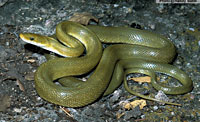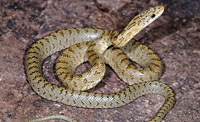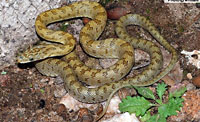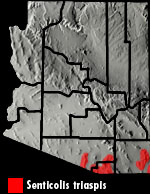Online Field Guide to The Reptiles and Amphibians of Arizona


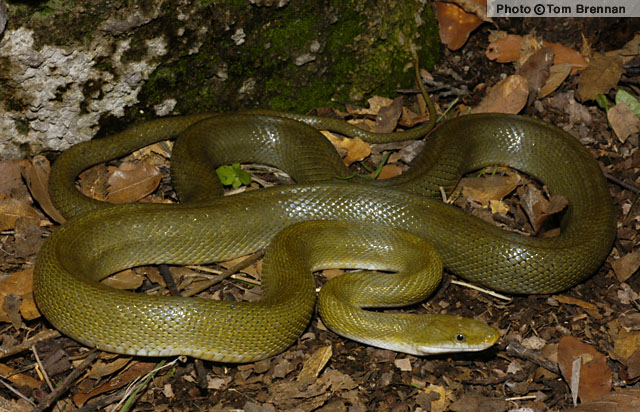
Santa Cruz County, AZ
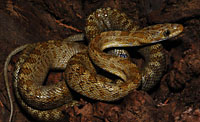 Juvenile. Cochise Co., AZ |
||
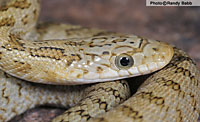 Juvenile. Sonora, Mexico |
| GREEN RATSNAKE Senticolis triaspis |
Non-Venomous
|
| DESCRIPTION: A long (up to 1,600 mm or 63″ in total length), plain green, yellow-green, or olive snake with a plain cream to light yellow underside. Young are gray to gray-green with prominent gray-brown dorsal blotches. As the snake ages the blotches begin to fade and the snakes coloration becomes more green. The dorsal blotches eventually disappear into the green background coloration. The dorsal scales are mildly keeled. The head is relatively long and narrow and is clearly distinct from the thin neck. The pupils are round. Females usually grow to a longer length than males.
DISTRIBUTION: This snake is found in the Baboquivari, Pajarito, Atascosa, Santa Rita, Empire, Patagonia, Chiricahua, Swisshelm, Pedregosa, and Peloncillo mountains of southeastern Arizona. In our state it occurs at elevations ranging from about 3,600′ to exposed, south-facing slopes at about 8,000′. HABITAT: The Green Ratsnake is primarily an inhabitant of Madrean Evergreen Woodland and the upper reaches of adjoining Semidesert Grassland communities. It is often encountered on relatively exposed, steep, rocky slopes and along drainages at the bases of such slopes. DIET: This is a relatively powerful constrictor that eats small mammals, lizards, birds, and bats. REPRODUCTION: Mating takes place in spring and a clutch off up to 9 eggs is laid in late spring or early summer. Bartlett. 2000. Snakes of North America: Western Brennan, T. C., and A. T. Holycross. 2006. A Field Guide to Amphibians and Reptiles in Arizona. Arizona Game and Fish Department. Phoenix, AZ Degenhardt, W. G., Painter, C. W., and Price, A. H.. 1996. Amphibians and Reptiles of New Mexico. University of New Mexico Press. Albuquerque. Fowlie. 1965. The Snakes of Arizona. Azul Quinta Press, Fallbrook, California Stebbins. 1985. Western Reptiles and Amphibians. Houghton Mifflin. New York, NY |
|
Visit Partners in Amphibian and Reptile Conservation:


HOME
Copyright © 2023, Arizona Game and Fish Department. All rights reserved.
If you make use of the textual contents of this site in reports, publications, etc. please cite and credit the author(s) and photographer(s). All photos on this website are copyrighted. However, those found in the species account section may be used for any noncommercial scientific, educational, or conservation purposes provided that photographs are not altered and continue to bear the copyright symbol and name of the photographer. Please contact the photographer regarding commercial use of copyrighted photographs.










